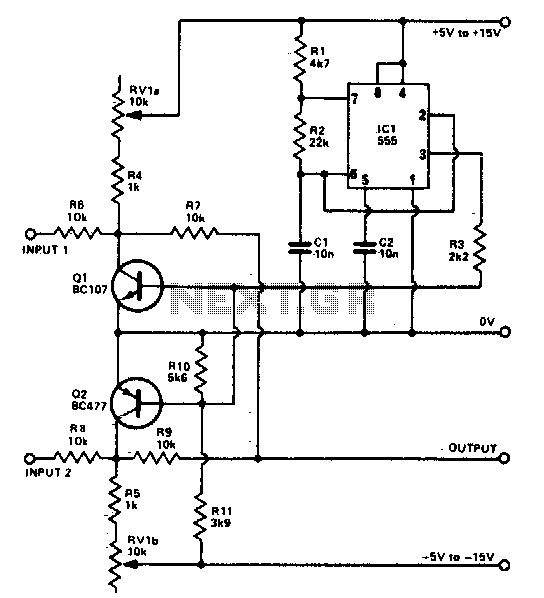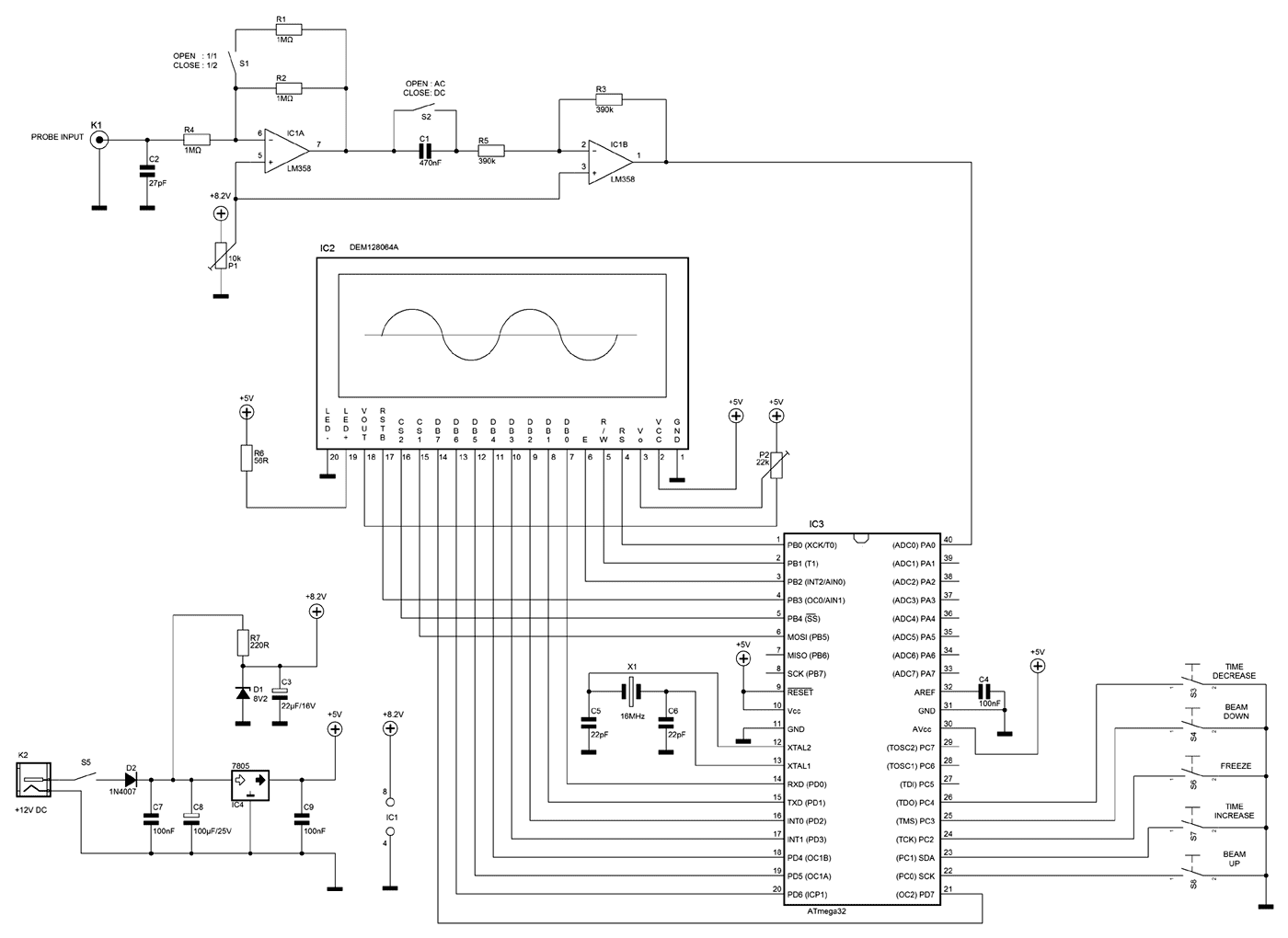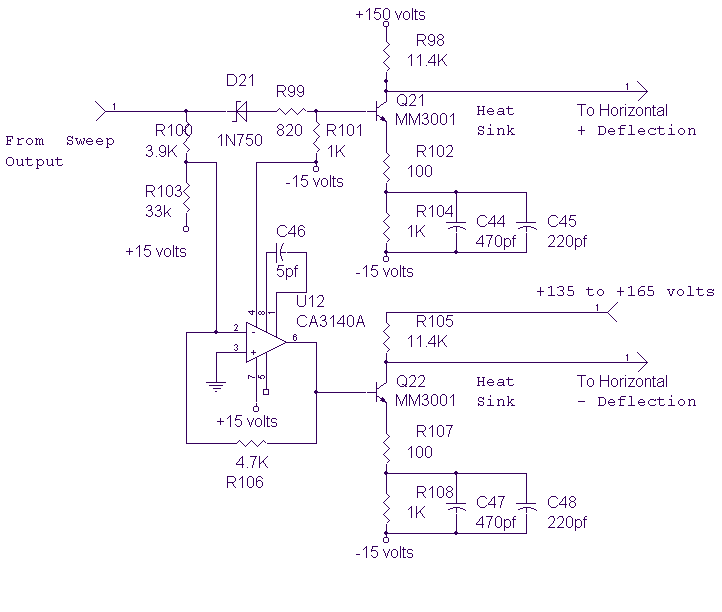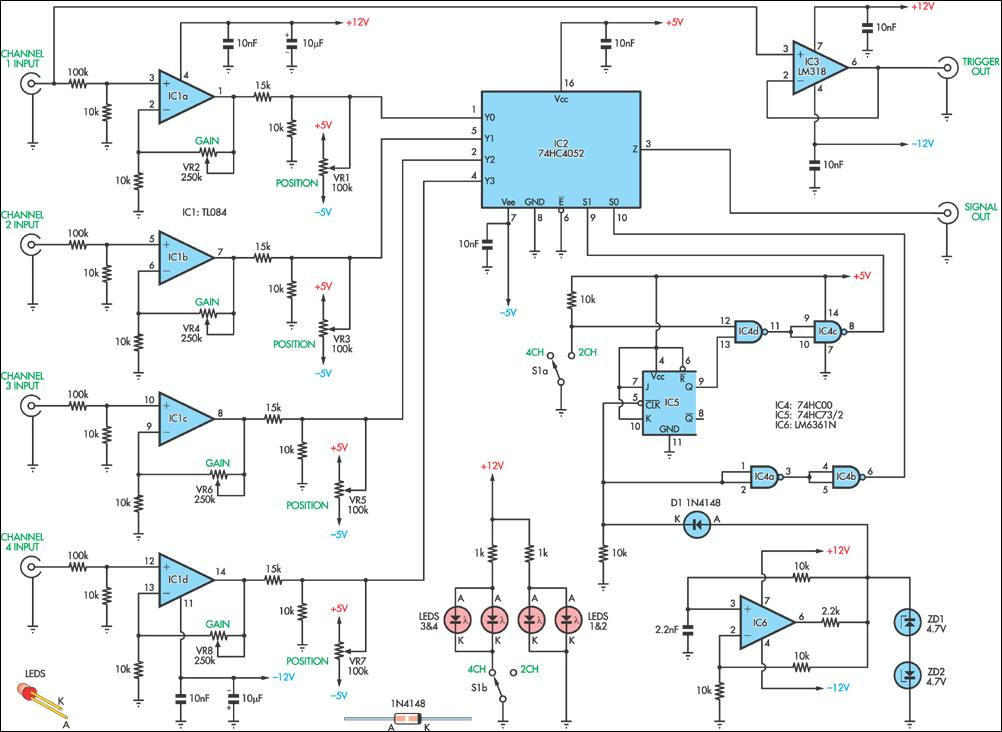
Beam sputter for oscilloscope

The foundation of the beam splitter utilizes a 555 timer configured as an astable multivibrator. Signals at the two inputs are alternately displayed on the oscilloscope, exhibiting a distinct separation between them. The output is regulated by the tandem potentiometer KVla/b, which also adjusts the amplitude of the traces.
The circuit design incorporates a 555 timer integrated circuit (IC) configured in an astable mode, which allows it to generate continuous square wave signals. This configuration is essential for creating a beam splitter effect, where the input signals are processed to produce alternating outputs. The 555 timer's frequency and duty cycle can be finely tuned by adjusting the resistors and capacitors connected to it, allowing for precise control over the timing characteristics of the output signals.
In this setup, two input signals are fed into the 555 timer, which processes them to produce two distinct output waveforms. These outputs can be observed on an oscilloscope, where they appear as clearly separated traces, making it easy to analyze the timing and phase relationship between the two signals. The separation is crucial for applications that require the simultaneous observation of two different signal sources without interference.
The tandem potentiometer KVla/b plays a vital role in this circuit by allowing for real-time adjustments to the output amplitude. By varying the resistance, the user can control the voltage levels of the output signals, thus modifying the height of the traces displayed on the oscilloscope. This feature is particularly useful in experimental setups where signal strength may need to be optimized for better visibility or analysis.
Overall, this configuration of a 555 timer as an astable multivibrator, combined with the adjustable potentiometer, provides a versatile and effective solution for signal processing and analysis in various electronic applications. The ability to visualize and manipulate multiple signals simultaneously enhances the functionality of the circuit, making it suitable for both educational and practical uses in electronics.The basis ofthe beam splitter is a 555 timer connected as an astable multivibrator. Signals at the two inputs are alternately displayed on the oscilloscope with a clear separation between them The output is controlled by the tandem potentiometer KVla/b which also varies the amplitude of the traces.
The circuit design incorporates a 555 timer integrated circuit (IC) configured in an astable mode, which allows it to generate continuous square wave signals. This configuration is essential for creating a beam splitter effect, where the input signals are processed to produce alternating outputs. The 555 timer's frequency and duty cycle can be finely tuned by adjusting the resistors and capacitors connected to it, allowing for precise control over the timing characteristics of the output signals.
In this setup, two input signals are fed into the 555 timer, which processes them to produce two distinct output waveforms. These outputs can be observed on an oscilloscope, where they appear as clearly separated traces, making it easy to analyze the timing and phase relationship between the two signals. The separation is crucial for applications that require the simultaneous observation of two different signal sources without interference.
The tandem potentiometer KVla/b plays a vital role in this circuit by allowing for real-time adjustments to the output amplitude. By varying the resistance, the user can control the voltage levels of the output signals, thus modifying the height of the traces displayed on the oscilloscope. This feature is particularly useful in experimental setups where signal strength may need to be optimized for better visibility or analysis.
Overall, this configuration of a 555 timer as an astable multivibrator, combined with the adjustable potentiometer, provides a versatile and effective solution for signal processing and analysis in various electronic applications. The ability to visualize and manipulate multiple signals simultaneously enhances the functionality of the circuit, making it suitable for both educational and practical uses in electronics.The basis ofthe beam splitter is a 555 timer connected as an astable multivibrator. Signals at the two inputs are alternately displayed on the oscilloscope with a clear separation between them The output is controlled by the tandem potentiometer KVla/b which also varies the amplitude of the traces.





